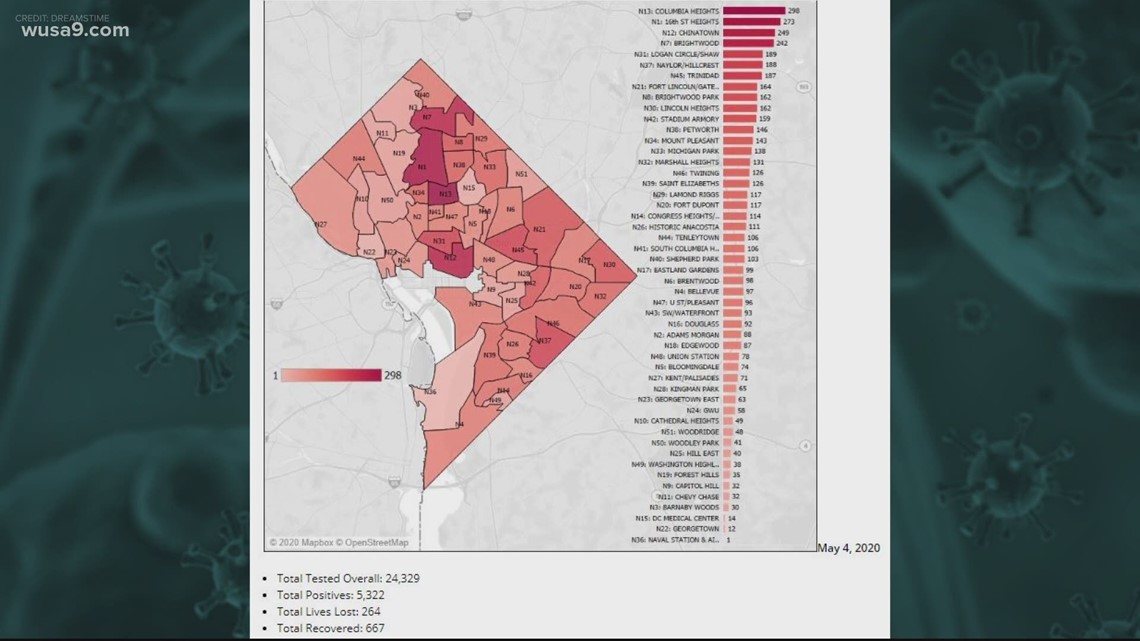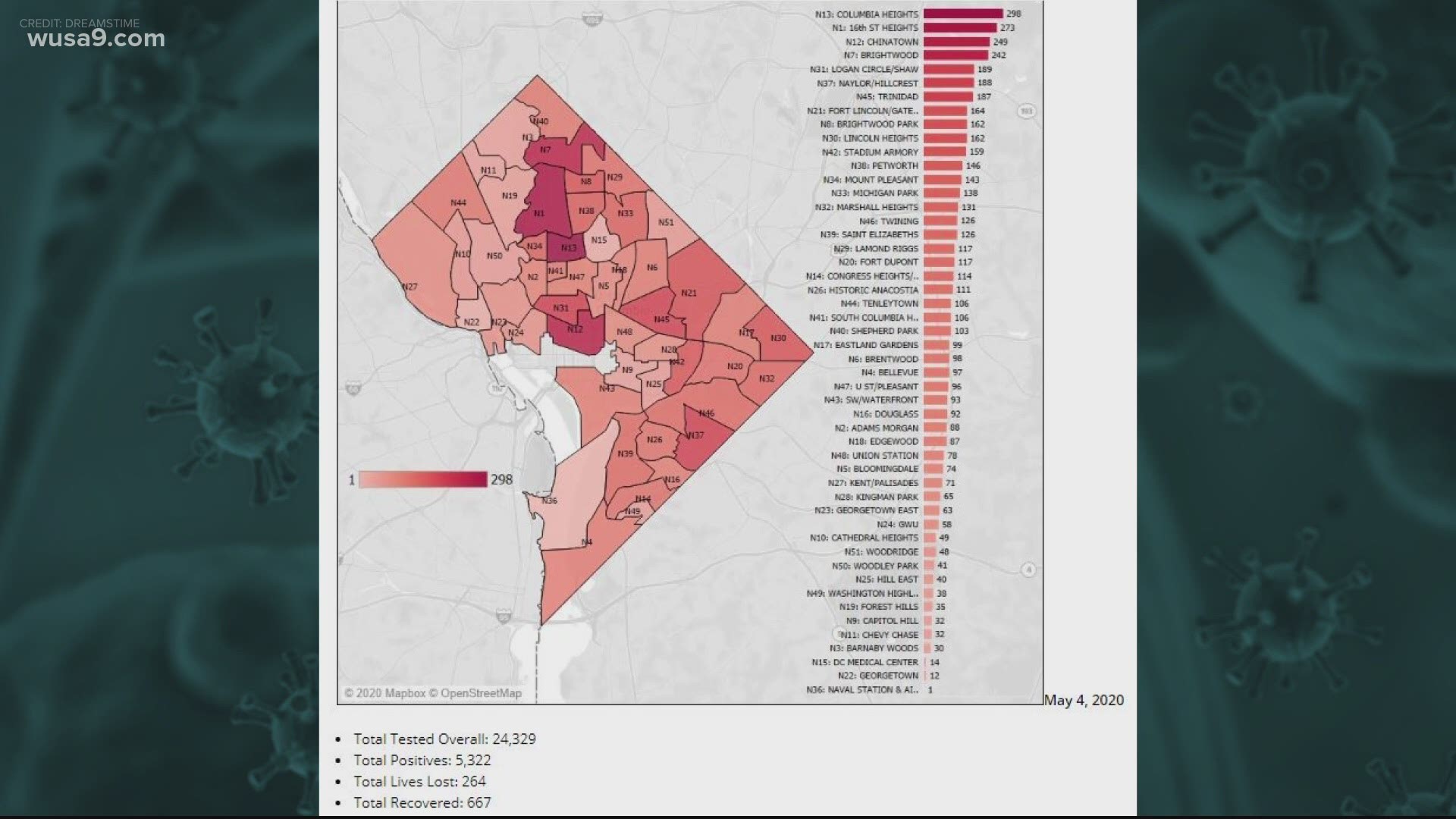WASHINGTON — It’s natural to pay more attention to something that is happening in your backyard. You don’t want it to directly impact you and your family.
Well, now neighborhoods in D.C. know exactly how coronavirus is impacting their community. Mayor Muriel Bowser released a breakdown of coronavirus cases by neighborhood.
The hot zones: Columbia Heights and 16th Street Heights in Ward 1, Chinatown in Ward 2, and Brightwood in Ward 4.
While the District has reported 5,654 positive cases of coronavirus, Columbia Heights accounts for 298 of those cases; 16th Street Heights has 273.
There are 249 cases in Chinatown and 242 in Brightwood.


But why are these areas seeing the worst numbers of positive coronavirus cases?
In a press conference on Monday, D.C.’s Department of Health Director Dr. LaQuandra Nesbitt highlighted high housing density and a larger population of residents who are essential workers.
She also noted that race and ethnicity also may be factors.
Thanks to data from the CDC, we’ve known for weeks about the racial disparities associated with positive cases of coronavirus nationally.
But with this new data highlighting D.C. neighborhoods, WUSA9 reached out to Connor Maxwell to better understand why certain neighborhoods in the district are seeing higher numbers.
Maxwell is an expert on Race and Ethnicity policy with the Center For American Progress.
"Wards 1 and 4 are extremely diverse," Maxwell said. "What’s really hard to know from the data that’s been made available by the Mayor’s office is whether this is largely driven by who lives in these wards or how many people live in these wards.
According to Maxwell’s research Wards 1 and 4 of some of the most densely populated in the city.
He says the increase of positive cases in these neighborhoods comes down to 3 main factors: access to care, preexisting conditions, and exposure to the virus.
Maxwell says exposure is a result of occupational and housing segregation. Essentially where you work and where you live.
"Segregation when it comes to housing is what we’re seeing in Columbia heights, 16th Street Heights," Maxwell said. "[That's] where people are living in more densely populated areas, so it’s harder to practice social distancing."
And when it comes to preexisting conditions, Maxwell said, "in DC in particular we know that while only around 14% of white residents have one of these preexisting conditions closer to 40% of these black residents have these conditions." He says its "no surprise that black people are more likely to be exposed get very sick and even die from this virus."
But Maxwell explains that without the full scope of testing data we can’t know for sure which neighborhoods have been impacted the most. He says that it included both positive and negative results.
"[If] you live in wards 7 and 8 you’re much more likely to be exposed to some health risks that could increase the likelihood of getting very sick, Maxwell said, "but we don’t know how much testing is happening in those specific wards.

